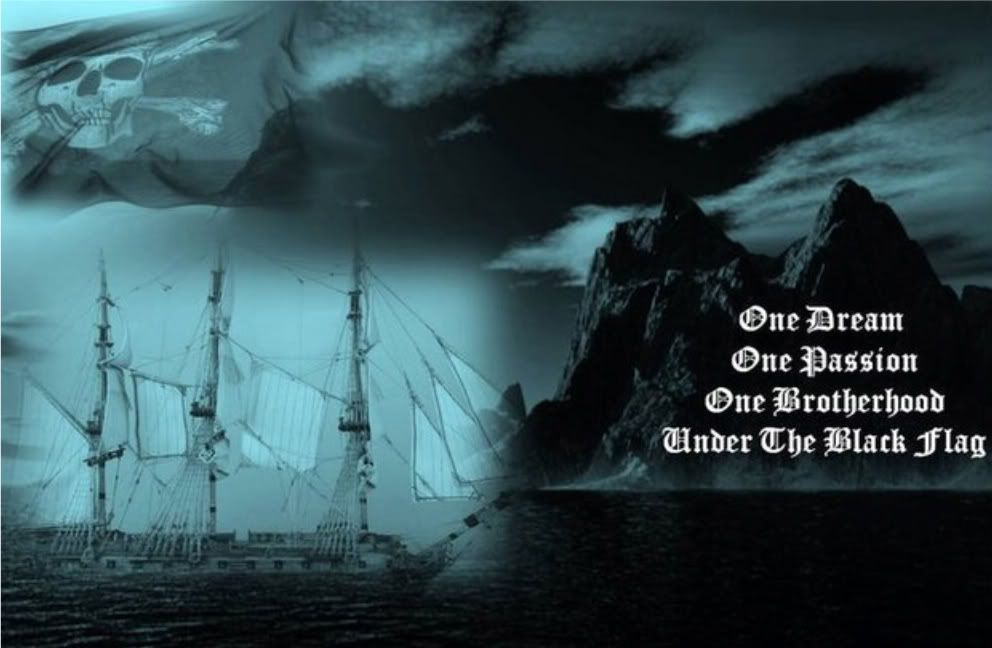Privateer: The History of a Pirate Name
articles, Privateer: The History of a Pirate Name 1:24 μ.μ.
Privateer is another name for a pirate. But a special kind of pirate—one sanctioned by a national government. The name also applies to the kind of ship on which such a pirate operates.
A privateer ship is an armed, privately owned vessel licensed by a state at war to cruise against enemy shipping, sometimes for the purpose of attacking warships but especially for capturing merchant vessels. The same
term, privateer, denotes a commander or a crew member of such a ship.
Virtually all nations engaged in privateering from ancient times to the 19th century. Typically the sponsoring government did not pay crews directly but allowed them to keep portions of any cargo they seized.
Even though the government commissions usually laid out rules for the privateers to follow, such rules were largely unenforceable once the ships reached the high seas. Therefore, privateers often crossed the line between helping their countries and helping themselves through outright piracy. Famous privateer-pirates included William Kidd (British, c. 1645-1701) and Jean Laffite (French, c. 1780-c. 1825).
In 1856 most European nations signed the Declaration of Paris, which declared privateering illegal. The United States finally repudiated the practice at the end of the 19th century, and Spain, the last European holdout, agreed to the ban in 1908.
The term privateer entered the English language in the 17th century. It was a simple combination of the adjective private and the suffix -eer, and was probably patterned after volunteer (according to the Oxford English Dictionary).
In its specific application to a ship, the word privateer very likely originated as an informal shortening of private man of war, the name previously in use from the mid-1640s to the mid-1660s. (The term man of war meant any vessel equipped for warfare, recorded since the 15th century).
Privateer replaced private man of war in the mid-1660s. Here is an early example: "How three Dutch privateers are taken, in one whereof Everson's son is captaine" (1665, Oxford).
The following example refers to the official status of British privateer ships: "Her Majesty having Impowered the Lord High Admiral of England to grant Letters of Marque, or Commissions for Privateers" (1702, Oxford).
In this example, American privateer vessels are mentioned: "The capture of a Mediterranean packet by an American privateer" (1813, Oxford).
The application of the word privateer to a commander or a crew member also began in the mid-1660s. For example, "The calling of the privateers will be but a remote and hazardous expedient....What compliance can be expected from men...that have no other element but the sea, or trade but privateering" (1664, Oxford).
Here is a later example: "Privateers were little scrupulous as to what kind of victim they pounced upon" (1883, Oxford).
Today the word privateer still has the same two meanings: a government-sanctioned pirate vessel and a sailor on such a ship.
_________________________
The Oxford English Dictionary. 2nd ed. Oxford, England: Clarendon Press, 1989.
A privateer ship is an armed, privately owned vessel licensed by a state at war to cruise against enemy shipping, sometimes for the purpose of attacking warships but especially for capturing merchant vessels. The same
term, privateer, denotes a commander or a crew member of such a ship.
Virtually all nations engaged in privateering from ancient times to the 19th century. Typically the sponsoring government did not pay crews directly but allowed them to keep portions of any cargo they seized.
Even though the government commissions usually laid out rules for the privateers to follow, such rules were largely unenforceable once the ships reached the high seas. Therefore, privateers often crossed the line between helping their countries and helping themselves through outright piracy. Famous privateer-pirates included William Kidd (British, c. 1645-1701) and Jean Laffite (French, c. 1780-c. 1825).
In 1856 most European nations signed the Declaration of Paris, which declared privateering illegal. The United States finally repudiated the practice at the end of the 19th century, and Spain, the last European holdout, agreed to the ban in 1908.
The term privateer entered the English language in the 17th century. It was a simple combination of the adjective private and the suffix -eer, and was probably patterned after volunteer (according to the Oxford English Dictionary).
In its specific application to a ship, the word privateer very likely originated as an informal shortening of private man of war, the name previously in use from the mid-1640s to the mid-1660s. (The term man of war meant any vessel equipped for warfare, recorded since the 15th century).
Privateer replaced private man of war in the mid-1660s. Here is an early example: "How three Dutch privateers are taken, in one whereof Everson's son is captaine" (1665, Oxford).
The following example refers to the official status of British privateer ships: "Her Majesty having Impowered the Lord High Admiral of England to grant Letters of Marque, or Commissions for Privateers" (1702, Oxford).
In this example, American privateer vessels are mentioned: "The capture of a Mediterranean packet by an American privateer" (1813, Oxford).
The application of the word privateer to a commander or a crew member also began in the mid-1660s. For example, "The calling of the privateers will be but a remote and hazardous expedient....What compliance can be expected from men...that have no other element but the sea, or trade but privateering" (1664, Oxford).
Here is a later example: "Privateers were little scrupulous as to what kind of victim they pounced upon" (1883, Oxford).
Today the word privateer still has the same two meanings: a government-sanctioned pirate vessel and a sailor on such a ship.
_________________________
The Oxford English Dictionary. 2nd ed. Oxford, England: Clarendon Press, 1989.













